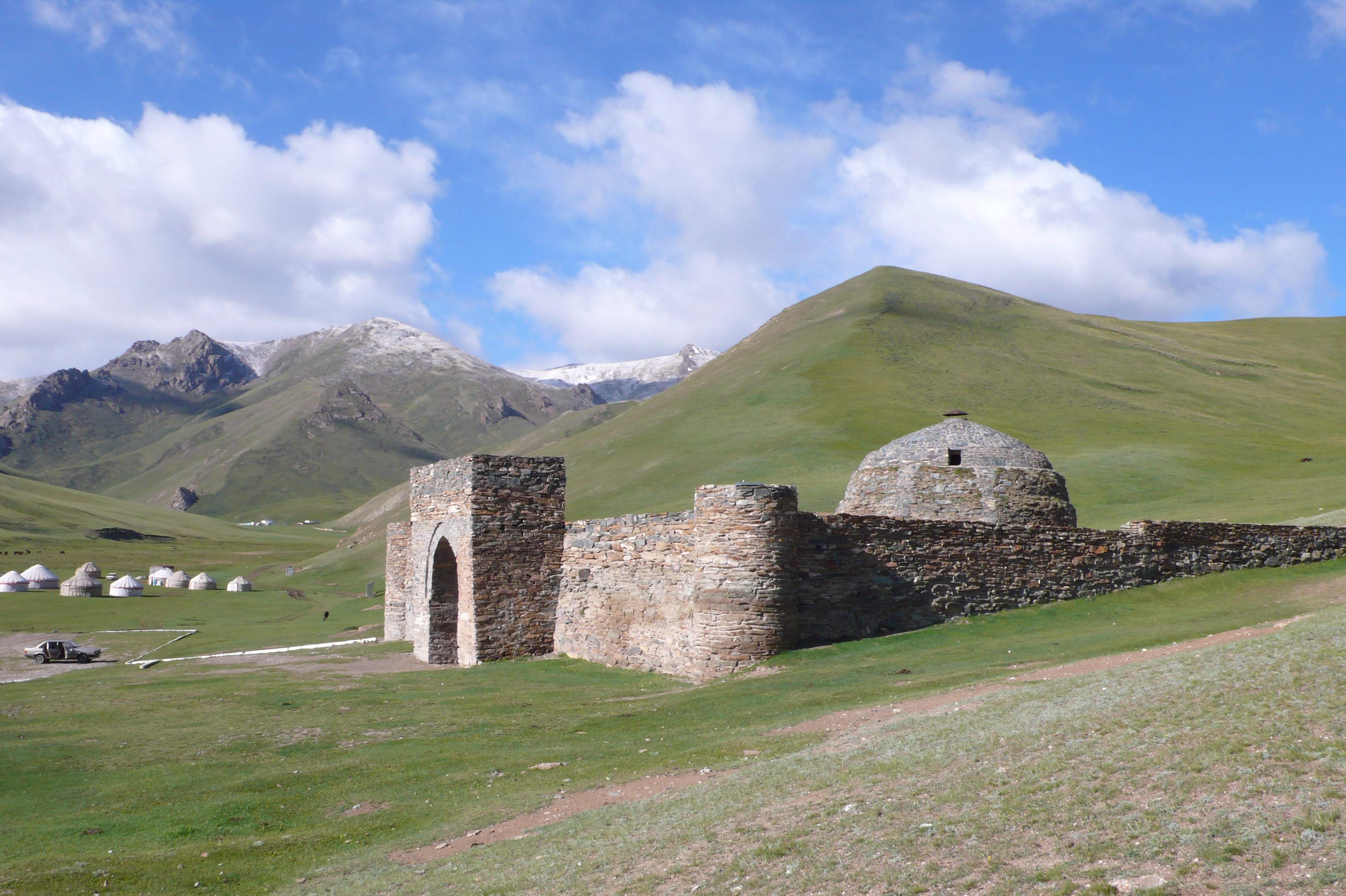Tash Rabat on:
[Wikipedia]
[Google]
[Amazon]
Tash Rabat is a well-preserved 15th-century stone
 There has been some debate about whether Tash Rabat was originally built as a caravanserai or a temple. As early as 1888, Russian doctor and traveler Nicolay Lvovich Zeland suggested that the site was originally an East Syrian or
There has been some debate about whether Tash Rabat was originally built as a caravanserai or a temple. As early as 1888, Russian doctor and traveler Nicolay Lvovich Zeland suggested that the site was originally an East Syrian or
Photos of Tash Rabat
Archaeological sites in Kyrgyzstan Caravanserais Hotels in Kyrgyzstan {{Central Asian history
caravanserai
A caravanserai (or caravansary; ) was an inn that provided lodging for travelers, merchants, and Caravan (travellers), caravans. They were present throughout much of the Islamic world. Depending on the region and period, they were called by a ...
in At-Bashy District
At-Bashy () is a district of Naryn Region in Kyrgyzstan established in its present borders in 1930. The administrative center is at At-Bashy. Its area is , and its resident population was 55,771 in 2021. The mountain lake Chatyr-Kul lies in the s ...
, Naryn Province
Naryn Region is the largest Regions of Kyrgyzstan, region of Kyrgyzstan. It is located in the east of the country and borders with Chüy Region in the north, Issyk-Kul Region in the northeast, Xinjiang, Xinjiang Uyghur Autonomous Region of China ...
, Kyrgyzstan
Kyrgyzstan, officially the Kyrgyz Republic, is a landlocked country in Central Asia lying in the Tian Shan and Pamir Mountains, Pamir mountain ranges. Bishkek is the Capital city, capital and List of cities in Kyrgyzstan, largest city. Kyrgyz ...
, located at an altitude of .
Geography
Tash Rabat is located somewhat east of the main north-south highway. To the south are Lake Chatyr-Kul andTorugart Pass
Torugart Pass (, , ; ; ) is a mountain pass in the Tian Shan mountain range near the border between the Naryn Region of Kyrgyzstan and the Xinjiang Autonomous Region of China. It is one of two border crossings between Kyrgyzstan and China, the o ...
. To the north is Koshoy Korgon, a ruined fortress of uncertain date.
Research
Buddhist
Buddhism, also known as Buddhadharma and Dharmavinaya, is an Indian religion and List of philosophies, philosophical tradition based on Pre-sectarian Buddhism, teachings attributed to the Buddha, a wandering teacher who lived in the 6th or ...
monastery
A monastery is a building or complex of buildings comprising the domestic quarters and workplaces of Monasticism, monastics, monks or nuns, whether living in Cenobitic monasticism, communities or alone (hermits). A monastery generally includes a ...
.
Research undertaken at the end of the 1970s and beginning of the 1980s by the Institute of History of the Kyrgyz Academy of Sciences concluded that Tash Rabat was originally built as a Nestorian
Nestorianism is a term used in Christian theology and Church history to refer to several mutually related but doctrinarily distinct sets of teachings. The first meaning of the term is related to the original teachings of Christian theologian ...
monastery in the 10th century, although no Christian artifacts were found during excavations
In archaeology, excavation is the exposure, processing and recording of archaeological remains. An excavation site or "dig" is the area being studied. These locations range from one to several areas at a time during a project and can be condu ...
. Later it was determined to be a Buddhist monastery as all inscriptions, artifacts and references were found to be Buddhist in nature. This was further supported by the fact that its inhabitants were Buddhist during the period of its construction.
Architecture
The structure consists of 31 rooms, including chambers in the central hall. The rooms are square and topped with domes which have openings for light at the top; transition from a quadrangular frame to adome
A dome () is an architectural element similar to the hollow upper half of a sphere. There is significant overlap with the term cupola, which may also refer to a dome or a structure on top of a dome. The precise definition of a dome has been a m ...
is achieved using a squinch
In architecture, a squinch is a structural element used to support the base of a circular or octagonal dome that surmounts a square-plan chamber. Squinches are placed to diagonally span each of the upper internal corners ( vertices) where the w ...
. Tash Rabat is completely made of rubble
Rubble is broken stone, of irregular size, shape and texture; undressed especially as a filling-in. Rubble naturally found in the soil is known also as 'brash' (compare cornbrash)."Rubble" def. 2., "Brash n. 2. def. 1. ''Oxford English Dictionar ...
stone on clay mortar with gypsum mortar
Mortar is a workable paste which hardens to bind building blocks such as stones, bricks, and concrete masonry units, to fill and seal the irregular gaps between them, spread the weight of them evenly, and sometimes to add decorative colours or ...
sealing joints. One of the furthest rooms also has a deep hole in the floor that resembles a well.
References
External links
Photos of Tash Rabat
Archaeological sites in Kyrgyzstan Caravanserais Hotels in Kyrgyzstan {{Central Asian history